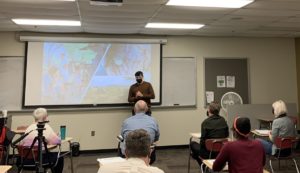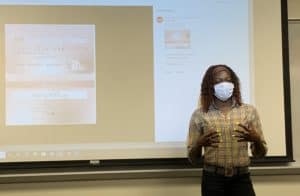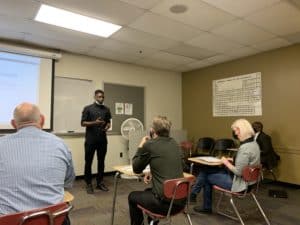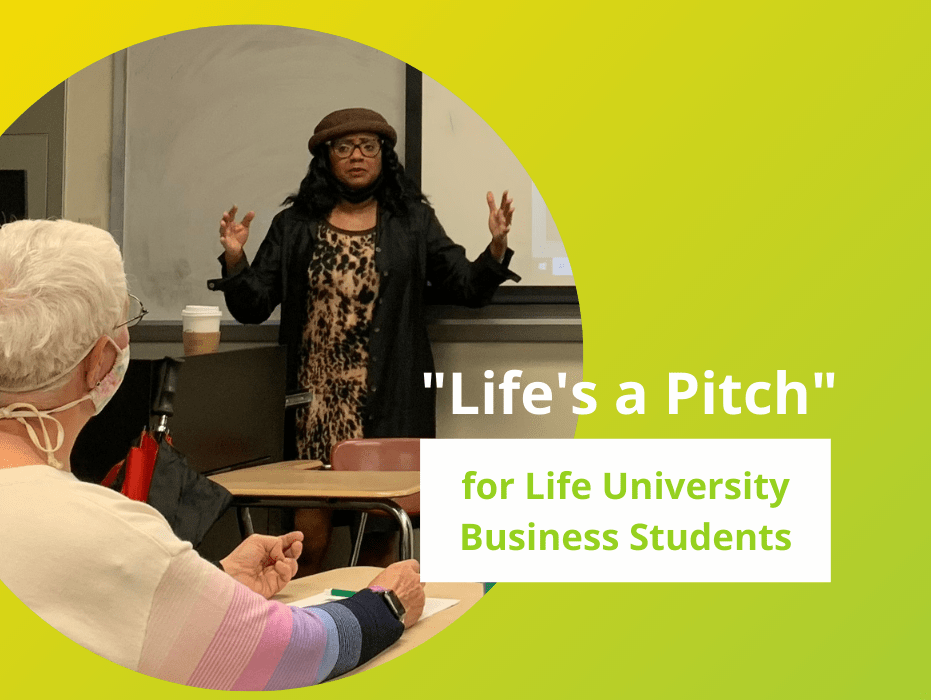The reality TV show “Shark Tank” is based on a simple idea: entrepreneurs present their ideas for products or services to a panel of investors, who then choose to invest – or not – based on the pitch, the company’s viability and the potential for a return on investment.
That concept inspired Life University Adjunct Professor Dr. Marla Thompson to create “Life’s a Pitch,” an assignment for her Business Ethics, Social Responsibility and Sustainability course. Over 10 weeks, students are tasked with developing business proposals and are required to incorporate an element of social responsibility or sustainability into their plans.
“As a result of the pandemic and countless people losing their main source of income, ‘Shark Tank’ has reinvigorated entrepreneurship,” Dr. Thompson said. “In this scenario, the judges or ‘sharks’ are Life University faculty and staff. The panel uses a grading rubric to evaluate each student’s overall presentation as well as to provide constructive feedback on how it can be improved.”

In the final week of Winter Quarter, 28 of Dr. Thompson’s students delivered 60- to 90-second-long pitches. The proposals were as varied as the students themselves, ranging from fitness centers and personal training services to clothing stores, beauty salons, event planning and life coaching. Several students wanted to start not-for-profit ventures that would work with children and teenagers in their communities, provide support for homeless people or rescue animals.
Many people in the class this quarter were LIFE student-athletes, which informed their business concepts. Some international students said they planned to return to their home countries to start their businesses.

“The methodology I use to design this class is problem-based learning,” Dr. Thompson explained. “PBL is a teaching method in which students learn by actively engaging in real-world and personally meaningful projects, which ideally are relevant to them.”

![]()
![]()
![]() Students were scored on a variety of elements: the content of their idea and presentation; the “hook” used to get the judges’ attention; how prepared they were to deliver the pitch and answer questions about it; the uniqueness and value proposition of their proposal; their presentation skills and enthusiasm; and a social responsibility component. The last category was addressed in several ways through philanthropy, conservation of environmental resources and improvements to existing business strategies and technologies.
Students were scored on a variety of elements: the content of their idea and presentation; the “hook” used to get the judges’ attention; how prepared they were to deliver the pitch and answer questions about it; the uniqueness and value proposition of their proposal; their presentation skills and enthusiasm; and a social responsibility component. The last category was addressed in several ways through philanthropy, conservation of environmental resources and improvements to existing business strategies and technologies.

Overall, Dr. Thompson said she wanted her students to complete the course better prepared to pursue careers in whatever field they choose and to improve the world around them, one business at a time.


Social Media